“They just wanna see you fallin’ / The only reason the cameras out when you’re walkin’ / The only reason they listening when you’re talkin’ / Waiting on you to contradict yourself / Albeit evict yourself / From the house / Like when Beth instigated that situation with Tami / Got David kicked out…” –Curren$y, “Life Under The Scope.”
I feel like each week something happens to reinforce just how much more rapidly Hip Hop moves on from on era to the next. I can vividly remember what seemed to be roughly a two-year run when Canibus (then known as Can-i-Bus) was setting up what I and many others assumed would be a long, critically and commercially successful Hip Hop career. He was making scene-stealing cameos on other artist’s tracks (such as Common’s “Making A Name For Ourselves” and Pharoahe Monch’s “Hell”). And his mix of obscure references, clever punchlines along with a brash cadence and delivery was sometimes enough to make you pay more attention to him than the artist whose name was on the album artwork. Canibus is still relevant nearly 15 years later, but not necessarily for the same reasons. And I don’t think it would be a diss to say none of us envisioned him pulling out an 8 1/2 by 11” legal pad in the middle of a pay-per-view Rap battle when we first heard the remix to “Music Makes Me High.” Shit happens.

This editorial is not an obituary for Canibus’ Hip Hop career. For me, last Saturday night’s events were more about spectacle than substance. As his forfeiture showed, Canibus clearly lost that battle with comparative unknown Dizaster. People will eventually forget about Canibus vs. Dizaster. From the litany of Blackberry freestyles to those pre-written BET Hip Hop Award Cyphers that everyone fawns over, and the dozens of viral “freestyle” videos rappers shoot every week, you can make a solid argument that the definition of freestyling has been devalued to rapping unheard lyrics to a surprise beat. Sadly, what happened with Canibus just kind of confirmed that. And, in a much larger sense, it was another example of an emcee being scorched by the very same limelight they originally sought.
When Courting The Spotlight Backfires
“I’ve seen ‘em come / I’ve watched ‘em go / I’ve watched ‘em rise / Witnessed it and watched ‘em blow/ Watched ‘em all blossom / And watched ‘em grow / Watched the lawsuits when they lost they dough…” –Dr. Dre, “The Watcher.”
As an artist, if you accumulate enough of these brand-damaging moments, and people can stop caring about your music altogether. Charles Hamilton is the poster-child for this point. After some critical acclaim and a few high-profile collaborations, a series of P.R. blunders found Hamilton turned away from Interscope Records and in need of mental help. Within an 18-month span the teen rapper dissed Eminem, disrespected the legacy of J Dilla and got punched by an ex-girlfriend on camera. The Sonic-inspired rapper is an extreme case, and I’d make the concession that such moments don’t necessarily have to signal the death of an artist’s career. Game could’ve easily been relegated to the Rap graveyard years ago. After a 2005 rift with 50 Cent, Game was publicly ousted from G-Unit and shot at during a standoff in New York.
Interestingly enough, Hamilton and Game both have (or had) ties to Interscope Records—one of the most powerful major labels left for Hip Hop artists. And they weren’t above drama with label mates. At times that worked both for and against them. While he annually throws some subliminal shots at Jay-Z, Game is no dummy. He carefully maintained his relationships with the likes of Lil Wayne and Pharrell, and he also repaired his partnership with his mentor Dr. Dre. With that ace in the hole, his litany of P.R. nightmares such as his butterfly cheek tattoo, allegedly tweeting the LA County Sherriff’s phone number, knuckling down a few people in the street, a few fights with Ras Kass and allegedly groping a woman on stage were all forgotten. Not to be lost in all of the drama is the fact that Game regularly made visits to the Billboard charts while all of this was going on. The headline hoarding almost seems to add to Game’s character, and there’s a reason that he and TMZ’s Harvey Levin are on a first-name basis.
Canibus, on the other hand, has never courted mainstream success, but 1998’s “Second Round K.O.” was a Top 40 single that spent 14 weeks on the charts. Since two Universal Records releases, Canibus has celebrated his figure in the underground, releasing albums regularly—many of which respectably appear on the Hip Hop/Rap charts. However, I think if any of his subsequent albums had even a fraction of that early commercial success, we would be talking about his music and not that huge notepad.
Rapper Fatigue In The Digital Era
“Who will be the captain of this ship / If it goes down / Don’t you know you have to go with it / Just because you rhymed for a couple of weeks / Doesn’t mean that you’ve reached the emcee’s peak / Let stop soundin’ all bitter / Ghetto child never be a quitter / But don’t be a phony in the litter…” –Q-Tip, “Phony Rappers,” by A Tribe Called Quest.
With a few lucky breaks here and there, who’s to say Canibus or Charles Hamilton couldn’t be enjoying the type of critical and mainstream commercial success afforded to someone like Game? Despite showing skills that initially earned them praise from fans, it seems Hamilton and Canibus clearly lack some basic decision-making skills. From ‘Bis deciding to pick fights with Eminem and J. Cole to Hamilton assauting a police officer, these kind of horrible moves are what take the focus away from the music. Too many instances of releasing tracks like 2009’s “Air Strike” or getting punched on camera by an ex-girlfriend during a friendly battle can transform anyone from the next promising emcee to a walking punchline.
The spotlight isn’t always your friend. I think potential listener fatigue also has to be factored in when artists like J. Cole, Big K.R.I.T. and B.o.B. release up to five free mixtapes worth of album quality material before their debut hits retail. There’s also physical exhaustion from constantly creating and performing. And our 24-hour news cycle, with at least one camera phone within an arm’s reach at all times, gives artists ample opportunities to make fools of themselves. Add in requisite press obligations to whatever mental and spiritual issues artists bring to the table before getting signed, and you’ve got a recipe for a breakdown like Hamilton’s. All of these factors make the erratic off-mic behavior of Azealia Banks, Canibus and Game easier to understand.
His history of long history of non-musical, career threatening decisions lead me to believe Canibus was shooting himself in the foot long before his beefs with LL Cool J, Wyclef Jean, Eminem and a growing list of others. But being from an era where upcoming artists made their name with scene-stealing cameo verses instead of a constant stream of mixtapes means most of those moments weren’t documented. If YouTube and Twitter were around during the early parts of Canibus’ career, we could’ve easily been talking about him in the same way we’re currently talking about Azealia Banks. The Internet provides immediate and wide-ranging access for newer artists, but it also comes with an almost surveillance like function of an accompanying blogosphere. Canibus was able to avoid it early in his career. But that same constant spotlight has repeatedly revealed his warts in recent years, and it may derail Azealia’s career before she picks up enough momentum for a sustainable run.
Canibus’ always sporadically updated Twitter feed hasn’t been updated since Saturday night’s battle. In the days following the battle, both Canibus and his manager have taken the defeat gracefully by congratulating Dizaster. Suffice it to say a live, freestyle battle wasn’t the ideal situation. For now, Azealia Banks has taken her ball and withdrawn from social media, just days after she had her first dance at retail with the 1991 EP—a product that the pen-pushers at Interscope will surely be using as a litmus test for her buzz. And last we heard, Hamilton was seeking professional help away from the industry. Interestingly enough, I don’t feel the book is closed for good on any of the aforementioned artists. Personally, I thought Canibus was finished in the early aughts. But he obviously had a dedicated and loyal fan base for people to even be interested in a pay-per-view Rap battle. And in Scarface, arguably one of the greatest emcees of all time, we have an example of someone that addressed and overcame a suicide attempt and bout with bipolar disorder. So there’s definitely hope for Hamilton as a rapper, and more importantly as a person. And for all we know, Banks’ self-removal from Twitter may have been more about not letting her digital stream of consciousness detract from her music. Only time will tell.
Aside from a legitimate concern about their personal issues, maybe we should be asking different questions. What is it about Hip Hop and celebrity culture in general that causes these artists to self sabotage?
Omar Burgess is a Long Beach, California native who has contributed to various magazines, newspapers and has been an editor at HipHopDX since 2008. Follow him on Twitter @FourFingerRings.


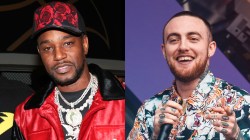
![Method Man Admits He Didn't Like Drake's "Wu-Tang Forever": "I [Wasn't] Getting On That"](https://hiphopdx.com/wp-content/uploads/2025/12/method-man-drake-wu-tang-forever-remix.jpg?w=250)
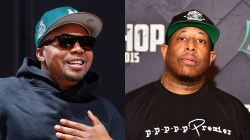

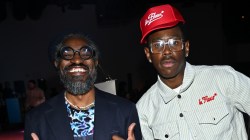

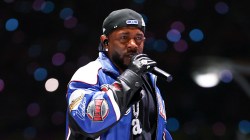
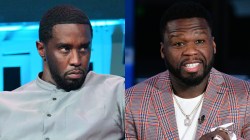
Still got love for this dude. Always will. People need to stop hating, and look at what he does for hip hop. In an age of Waka Flockas, 7-year old rappers, and the circus known as Young Money, he displays undeniable intellect- an element damn near extinct from music as a whole. His music makes it easy for me to defend hip hop as still the dominant genre, despite being plagued in a period of depression.
well said
I try to like Canibus the way I did in the beginning. It’s too hard, and this piece made exact sense as to why.
Canibus will never be an elite Mc, he’s all technical & no heart.
He had a great amount of hype and industry support in the begining of his career but he choked. He never became the great MC people thought he would be. Canibus fans like to play the role of Revisionist historians and pretend like he never had a chance, but thats a lie. He was down with the fugees back when they were the hottest group in the entire music world, he had several high profile features, a beef with a mainstream Icon & millions of dollars of marketing pumped into his career. So dont act like he never had a chance. Pharoah Monch never had a chance. Canibus had a better chance them most, he just dropped the ball
His music lacks soul, he is incapable of making a “T.R.O.Y” “Everyday Struggle” “Dear Mama” “Lose Yourself” or “It Was A Good Day” because his music lacks passion. All he has to fall back on are his technical abilities, which mean nothing to most people. Rhyming a million words together doesn’t reach anybody if the song is about aliens or math problems or some paranoid delusions you have about the illuminati being responsible for the problems you caused yourself.
Was Chuck D the greatest wordsmith to grace the Microphone??……No, far from it, but his music meant something and reached people, which is why I would take him over canibus any day of the week.
And his obvious jealousy over everybody more succesful then him doesnt help his case either. Dude has been stalking Eminem for over a decade like a deranged ex-girlfriend, he blames LL Cool J for “Black Balling” him when the truth is, LL probably never had to. His album in 1998 wasnt blackballed, it was promoted everywhere, he was on the cover of magazines. When the record failed is when the game turned its back on him. That has nothing to do with LL or Wyclef, it has to do with you not living up to expectations. The Music buisness turns its back on every artist who doesnt deliver, Bis is just the only one thats a big enough crybaby to develop some make believe conspiracy to make himself feel better about his failures.
And I wont even mentioned that J Cole debacle
Canibus is a brilliant technician but a horrible artist. When he pulled out that notebook it speaks volumes for the kind of MC he is. He had no power over that crowd from jump street. The white kid knew how to work the crowd, and how to get reactions from those kids. Bis just stood there and rappped, then got pissed off when things didnt go his way. Last night was a perfect example of the type of artist he is and always was. Pure Technique, zero soul
You eminem stans are getting more clever..always tryna include this pop rapper amongs the greats. Troy…dear mama..it was a good day…lose yourself..um…which one is out of place on this list…i notice some of the posters here just want to try and stick eminem into the convo as if he has the material to prove it…no classic albums…career dissin pop queens…give it up already you neophytes…as for canibus, son seems to have issues deeper than just hip hop..article was on point
you’ve just pretty much described all of todays battle rappers. Cassidy anyone? J-Hood, Royce da 5’9, Serius Jones? Even though the battles display great skill and are entertaining, at the end of the day Takeover and Ether were better passionate songs from two semi-battle rappers. Battle rappers practice the passion out of their lines instead of creating at the peak of creativity due to the stress of having the most well put together punchlines.
Eloquently put Chino813….
if charles had a mentor or some veteran rapper to take him under their wings he would have been in a better situation or at least be able to revive his career.
Well said Mr. Burgess. Peace and Love.
wtf did i just read this article is garbage
basically it should have been this
“after saturday it is clear Cnaibus won, because if you go back and watch the verses Canibus spit his rhymes accordingly to a freestyle environment! Dizaster has no place in the hip-hop world, nothing but an autistic fat Arabian that can’t get a record deal and has to spit in such a way it looks like he has substance. None of his lyrics were memorable, and they all echoed that playground ‘your mum’ style dissin! He has no substance and would fail trying to record a record, whos would listen to it? Further more who would pay him for it? The guy doesn’t represent Hip-Hop and he never will. Whereas Canibus illuminates his listeners with real messages and technical splendour that hip-hop can give us and always has!” HHDX
That’s what you motherfuckers should have wrote, Dizaster is a media fail, Canibus needs to release more records I love em! Pure science and fantasy I dont wanna hear some fat ‘Canadian Arabian’ fucking talking about what he’s watched lately on tv because thats all his fucking rhymes were, smilies with film and tv characters once he’s mentioned everything he’s out, no creativity! Fat fuck!
I don’t know if I’m just baked as shit, but that was a pretty good summary homie
“Those look like Tom cruise’s Mom’s shoes if they was dipped in some nasty as won ton soup”-Canibus via Kotd-Vendetta battle
“Your not strong enough to top your peak,
Just face it you’ve aged and you’ve gotten weak,
You could no longer keep up pace with today’s top elites,
Not accapella or on a beat.
Just stop blogging please if not at least while you still got a spot to keep.
You used to be a roll model to all these geeks,
Even gangsters looked up to you like when the respected father speaks.
See the problem with hip hop is you are unique,
Thats why it also bothers me cause I feel like i’m putting my own dog to sleep.”- Dizaster via Kotd-Vendetta battle
What fuckin battle were you watching?
“No creativity? He also freestyle multiple things on the spot bitch:
“Those look like Tom cruise’s Mom’s shoes if they was dipped in some nasty as won ton soup”
Sorry to make you sound stupid, but those were written.
http://distilleryimage5.instagram.com/db7f4830b2b911e1be6a12313820455d_7.jpg
Clearly, Bus flows just like he writes: UNORGANIZED.
HEEELL Y EEEZZZ NIKKKAS
FINALLY IT HAPPENED – JUST BOUGHT A NEW RIDE – A CAM A RO CONVERTIBLE.GOT APPROVED FOR 26 LARGE. BEEN 5 YRS SINCE IVE GOTTEN SHYT APPROVED, BUT NOW ALL MY CRE-DIT SHEET GONE. ALL OF IT.
IF YOU STRUGGLING WITH THAT CRE-DIT HISTORY ISHH, GET RID OF ALL DAT TODAY – CALL THESE PEEPS AT 8^8^8-9-2-7 -3-3-5-6. . THEY DO AMAZING WORK AND THEY ARE CHEAP AS FUQQ. GOT RID OF ALL MY SHYYT IN NO TIME.
MY HOMEBOY WAS IN THE GUTTA TOO, AND HE CLEANER THAN ME NOW-gettin a condo!!
Hit em up – THEY WILL HELP U!!
I still got love for Bis. That shit was fucked up though.
Good article Omar. I feel what you’re saying.
I’m actually not worried about Canibus. He has a loyal fan base that will continue to sustain him. To hear his detractors tell it, he was supposed to be done and over with 12 years ago! He’ll be fine.
I feel like the lackluster response he got from his first album changed his career forever. It defined him.
I thought it was a good album, but I’m one of the few. If you remove change 2 or 3 songs on the album to ones with more acceptable beats (looking at you “Channel Zero”) I think critics wouldn’t have trashed it so much.
Once he got so much shit for that album I felt like his entire style changed.
He was putting too many bars into his verses, he was getting more and more into science and technology rhymes that he lost a lot of people, he was blaming everyone else but himself for his first album (“mutha fuckin’ wyflef spoiled it”), he went out and said he doesn’t give a fuck about beats just lyrics, he started ‘beef’ with random emcees for no reason and put out shitty diss songs (ex. the Em diss song was horrible).
It’s a shame to think what his career could have been.
His verse alone on Lost Boyz ‘Beast from the East’ will still go down as one of the greatest all out lyrical verses from the 90’s (not talking memorable or heartfelt, just straight lyrics).
Co-Fucking-Sign! I’m also one of the few who think that Can-I-Bus was a great album, and while the beats weren’t all crazy dope, I seriously didn’t think they were all THAT bad! @ the end of the day, Canibus has to take responsibility for his lack of success. How do you go from “Yeah, that’s the beat right there” to “Muthafucka Wyclef spoiled it”?! He wasn’t forced to rap on those beats, he coulda outsourced his production, he coulda picked subject matter more relatable to a majority of people, etc. etc. If Nas, Jay-Z and Em could do it, why can’t he?
damn that verse from Beast from the East was just MONSTER man.
Just the very fact that Omar put Canibus and Charles Hamilton in the same category, proves hip hip is dead!
Biss verses were on fire! If it came down to a battle of lyrics over memory, Diz clearly won! The state of hip hop is in some much disrepair, without a cat like Canibus in the building the whole shit would collapse!
What????… Its thousands of these types of weirdos out there…
uhh…couple of factors:
Bus gave Diz his rhyme book, Diz uploaded a picture of it, and then the internet could see what he wrote. He LITERALLY wrote down “look at those tom cruise shoes” on there to make it seem like a freestyle. His shit was GARBAGE. And the fact that Diz freestyled his entire 3rd round against him shows how bad it would have been. There was no fire there.
Honestly, I feel all of the people that have these crazy set backs would have them even if they werent in the spotlight. Everyone works with people that constantly have crazy drama in their lives or is that person. Everyone knows people that can’t catch a break even when the best opportunity is laid out for them. On the creative side, most if not all creative people are flawed on at least an emotional level and let their emotional scars manifest in an outwardly destructive way. How many entertainers have od’d? How many suicides? Bouts of depression? Crazy behavior”? Spotlight or not, I feel the same things would happen to the people they happen to, just on a different scale. On another note, his reasoning for the notebook is crazier than the fact that he had one.
These criticism are the worse I heard in my whole life because the greatest emcee of all time didnt die on June 9th
People just love to hate Bis. Most of them dont even listen to the music, they just talk shit, just like the person who prolly wrote this article. You cant deny the level of lyricism he delivers on a track no matter how hard you hateful motherfuckers try. You can have all the Hip Hop sites and media shit on him all you like still wont change it. All they do is focus on negative shit instead of positive, they dont focus on the tons of positive messages Bis has put in his music over the years and not to mention the lyrics he has giving his life to Fuck the haters fuck the guy who wrote this article and fuck the people who talk shit but dont even listen to him. Bis has more soul then you will ever imagine fucking pieces of shit!
get a tissue and wipe your tears you crying bitch.. getting your feelings hurt cause canibitch stays losing..and believe me,i’ve given him a chance but his not all you muthufuckers claim him to be
The simple point is, don’t be an idiot! Making stupid decisions has ruined Canibus’s career. Also, who wants to hear science fiction bullshit in rap songs?? When he came out he was actually a sick emcee spitting multi-syllable rhymes. Then he turned into a sci-fi writer and ruined his flow and rapped on crappy beats.
It’s all his mistake that he didn’t ever achieve success.
The whole thing looked staged to me….Something else is going on here that we can’t see.
This is a STAGED event!!!!
Canibus did this, due to the years of being blackballed and shitted on by the media
Has anyone ever hear of the deceased comedian Andy Kaufman?
Canibus is the black, rapping version…He did it with music industry parody album ” C True Hollywood Stories”
If you are a die hard canibus fan, you know he cares about his legacy as a writer/poet as opposed to his present critical acclaim…that is due to him being used to being shitted on, from his blackball from the industry
He was initially blackballed by the LL affiliated Def Jam and then the eminem affiliated Interscope, two giants, who influence the online media
Just look how eagerly the online sites are attacking him while he is down…even posting the rediculousy fake apology, without bothering to check sources
If you are not a fan of canibus, I wouldn’t expect you to believe this, but for a die hard, just look at what happened:
The sling and the stitches
The “thank you Jesus” intro
“those are Tom cruise mom’s shoes”
“mama say mama sai”
“peanut butter honey brown eyes”
Pulling out the notepad, the constant smiling, yelling at the crowd etc
Canibus was mocking the battle scene and toying with the media
You say why would someone commit career suicide? Everybody already hated canibus besides his fan base. He always it shitted on by the media
Allhiphop stated that canibus was coming out of retirement while talking about this upcoming battle….when actually canibus releases an album every year, and if you want to count bar for bar, he has released more material in his career than all the other greats
It will all come to the light that canibus staged it, but nothing will change…The media will continue to riddle every canibus article about his failures, non fans will disrespect him, and his fan base will continue to defend him
Canibus meanwhile, will continue to release material at a rapid pace(his upcoming album RTJ200 is a 9 hour double DVD, 10000 bar release, equivalent to 20 albums of material at once), will continue to push the boundaries on lyricism, and will remain an enigma that makes puzzling decisions
Once again, he STAGED it all
You give the man way too much credit… and nothing of your theory makes any sense… he just fucked up… if your theory was true, one would think his brother (the idiot with the open shirt next to canibus) was in on the joke… but no, he is posting retarded statements on youtube ranting about dizaster…
ARE YOU CANIBUS? CAUSE YOU DAMN SHALL SOUND LIKE YOU KNOW HIS EVERY MOVE.
Finally someone that gets it
You have many good points, and as a true Canibus fan, this was painful to watch, but anybody who has heard any of his cerebral material, not just the couple of mainstream songs, knows that Canibus is highly intelligent. This was definitely staged, but to what degree did Canibus know how shit was going down is something only he knows.
shut up you faggot, don’t try to excuse his failure as something that was planned..the media wouldnt be shitting on him if he didn’t keep give them excuses to.. it happens to everyone in the spotlight,not just your prescious annoying canibus.. he could have been great but he chose to be a weird minded little individual..
CANIBUS has made alot of mistakes. One of the biggest ones was hiring M-80 as his manager. First off, M-80 was the one that came up with the scheme for him to use d-12 acapellas & add them to an Eminem diss track. Secondly, M-Shady came up with this pay-per-view battle idea only for the money. CANIBUS pulling out the notebook was, of course, one of the few decisions he has actually made on his own volition. All the ppl who have worked with M-80 before like C RAYZ WALZ (C actually made a diss song about him), Killa Priest, & many others no longer work with him because he is a rotten douchbag phink, who sold/sells the unused & scrapped acapellas from the artists recording sessions, without notifying the actual artists. This M-SHADY cocksucker actually graduated from the JERRY HELLER (RUTHLESS RECORDS) SCHOOL OF RIPPING YOUR OWN ARTISTS OFF while living off of your Rich parents to give himself the appearrance to his artists that is successful. Believe me, once CANIBUS fires M-LADY, he will improve his chances of elevating his career x20. Real Talk
Im not saying he staged it but im very sure canibus can remember 3 rhymes for a battle.he went there talked shit and left with 12k win or loose.very odd the man who writes so many bars it makes your head spin cant remember 3 verses its just dumb to say he cant.so what was going on there?we might never know.
yeah you right a friend of mine bought a verse a killa priest from m-eithty for $400 dollars and when my friend bumped into killa priest in Redondo Beach and wanted to thank killa priest for the verse. killa priest didnt know anything about the verse and was really pissed off and shouting. my friend told him he bought it from m-eithy and killa went super ape-shit ballistic
lmfao this guy mr markoff m-eighty must get around. He sold me some Bronze Nazareth beats (in my opinion he is a better producer than Rza). I contacted Bronze via email just to tell him how amazing his production was on the beats of his I bought. Bronze Nazareth wasn’t even aware of the transaction at all. He had me email him the beats just so he would know what beats of his were involved in the sale!
Isnt it ironic that Canibus was the biggest “Dizaster” that night
Staged event that maybe 1 or 2 other people besides canibus knew about, and they weren’t from KOTD
So where does Diozaster go from here,he has a few heads attention but still long way to go before he can even call himself an artist… WOW!!!
LOL @ these M-Eighty stories in comments. Goodness. Misery loves company as its management.
The ironic thing is that kid that battled canibus sounds like he bit the shit out of his style.
he did and he admitted to that at the show I was there
So it’s been in the last six days that open mic battles have all of a sudden become the most popular industry talk in this music scene right about now in this moment
I don’t know why there’s all this m eighty hate he’s respected by most everybody in the industry you people need to get a life.
Why does the writer think Canibus is over because he doesn’t have any big top 40 hits??
Not every artist lusts after commercial success.
I would put a bet on it that Canibus doesn’t give a sh1t about being a commercial rap artist. Props to him for keeping it real, even if this last episode was a bit of a disaster. Everybody has a shocker every now and then, and Canibus just doesn’t have the PR team which most of these new skool artists have.
Pun intended? Lmao… Was a bit of a….
This dude disaster is more like a SPOKEN WORD POET… i’m willing to bet he can’t ride a beat for shit!!!! He really don’t have a FLOW just saying…he
lol!!!!!!!!!
He was like a big angry kid throwing a tantrum/hissy fit the entire battle. Wack voice, horrible rushed delivery, obvious speech impediment/lisp. Dude would sound atrocious on a record and would completely lack any type of appeal.
I just put this shit together Canibus is a fucking Genius!! Just wait
That’s what I’m sayin!
whatever way it goes down his lyrics are still sick and thats what rap is lacking, more intelligent lyrical shit in one canibus song than all of rick ross albums combined!
Yo, HHDX, I said almost all of the same stuff on my blog earlier this week. Great points and research to clarify your points though.
Check it out at: thedoubletruth.blogspot.com
“Yeah fuck M-Eighty. Too bad none of that shit you outsiders are saying is true.”
Hahahahaha
M-Eighty
THAT NIGGA KILLED ME WHEN HE FLIPPIN THE PAGES WITH HIS BROKEN ARM
CAN ANYBODY SAY ROTISSERIE
Omar Burgess you sure can prattle on about absolute nonsense, can’t you?
Great article…
So now it has come to this smh….I will say it again,and again,and again,Canibook got bodybagged!!!! Nothing was staged and who the fuck stages a choke?????????? Canibook challenged diz and diz accepted,Diz battled bis and bis lost point blank period!!!! You know what fuck that he choked,Diz totally ripped dude apart with writtens and mixed in freestyles. Sad day that when you. have to bring up old as dirt albums just to try and save face…..No way around it canibook died at kotd and his career is over…..DEAL WITH IT
Canibus did not die, he’s still alive you redundant Neanderthal!! your just mad cause he is 10 times smarter then you even when he is smoking crack.. I mean what are you some kind of nazi? yeah you like being a nazi bitch dont you? i bet you jack off to anything related to Hitler, even if its a shemale porn with the shemale dressing up as hitler masterbating in front of the camera tossing jewish salad.. to answer your question, when your an underground wonder like canibus you can do whatever you like including self-sabotaging your own image and make the other guy look all spazed out and demonic all in the effort to get paid for basically nothing.. now THAT is what you call genius my friend but your anger will not let you grasp that very concept and therefore you will remain the child that you are right now.. your going to have to accept the fact that dizaster tried his very best for nothing and that canibus got away with stealing Canada’s money basically I mean DEAL WITH IT YOU LITTLE GIRL!!
i dont hate on him but why sign up for freestyle if you cant get it done, nigs a beast still tho hes slapp drake and his but buddies
Headlines should have read:
CANIBUS SETS LARGEST TROLL TRAP IN HIP HOP HISTORY, ‘SINGLE HANDEDLY’ MOCKS AN ENTIRE HIP HOP SUB GENRE AND SKATES WITH 12G’S IN CANADIAN WHITE BOY MONEY
That would have been more like it.
people talking shit but if bis said i didnt train i want a rematch it would double in sales.whos not relevant?
yes…. and we know canibus could. sure, he got demolished, but he had his moments. “i laugh at ya style, the wise owl laughs at the crowd!
pound for pound? I clip ya wings lift ya ass off the ground
throw you in the air, crash you into clouds!!”
to answer your last question, check out Chuck Klosterman’s article on being a superstar…it essentially boils down to “being a superstar means being in a state of arrested development”
the game crying ? why didnt he bring that up?…
The problems these artists have were already there before they got noticed. The cameras and social media just amplifies it…
yo canibus got EAT DAMM!!!!! real rap oh boy
but to be fair that first round Canibus won
nope im sorry i’m high bus chalk on that too